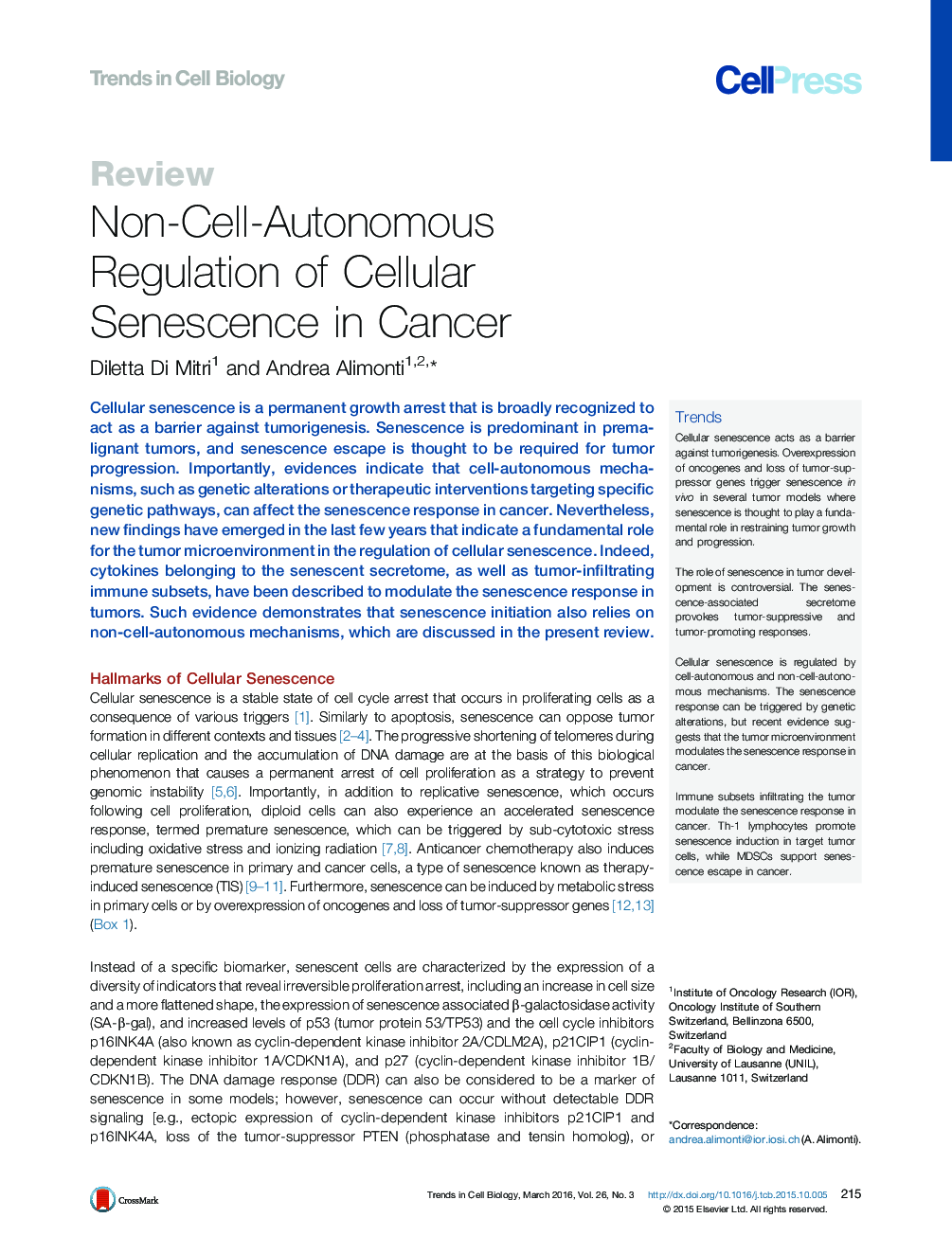| Article ID | Journal | Published Year | Pages | File Type |
|---|---|---|---|---|
| 2204347 | Trends in Cell Biology | 2016 | 12 Pages |
Cellular senescence is a permanent growth arrest that is broadly recognized to act as a barrier against tumorigenesis. Senescence is predominant in premalignant tumors, and senescence escape is thought to be required for tumor progression. Importantly, evidences indicate that cell-autonomous mechanisms, such as genetic alterations or therapeutic interventions targeting specific genetic pathways, can affect the senescence response in cancer. Nevertheless, new findings have emerged in the last few years that indicate a fundamental role for the tumor microenvironment in the regulation of cellular senescence. Indeed, cytokines belonging to the senescent secretome, as well as tumor-infiltrating immune subsets, have been described to modulate the senescence response in tumors. Such evidence demonstrates that senescence initiation also relies on non-cell-autonomous mechanisms, which are discussed in the present review.
TrendsCellular senescence acts as a barrier against tumorigenesis. Overexpression of oncogenes and loss of tumor-suppressor genes trigger senescence in vivo in several tumor models where senescence is thought to play a fundamental role in restraining tumor growth and progression.The role of senescence in tumor development is controversial. The senescence-associated secretome provokes tumor-suppressive and tumor-promoting responses.Cellular senescence is regulated by cell-autonomous and non-cell-autonomous mechanisms. The senescence response can be triggered by genetic alterations, but recent evidence suggests that the tumor microenvironment modulates the senescence response in cancer.Immune subsets infiltrating the tumor modulate the senescence response in cancer. Th-1 lymphocytes promote senescence induction in target tumor cells, while MDSCs support senescence escape in cancer.
